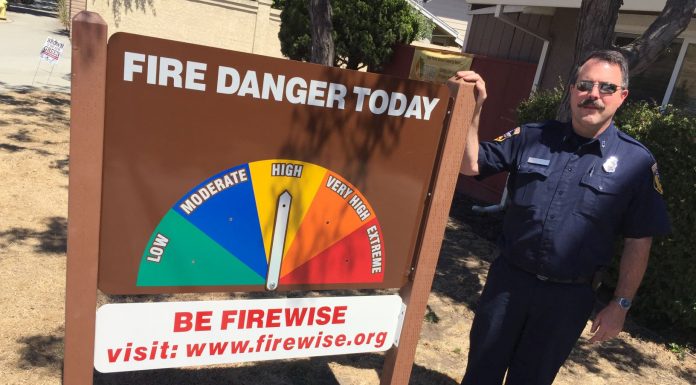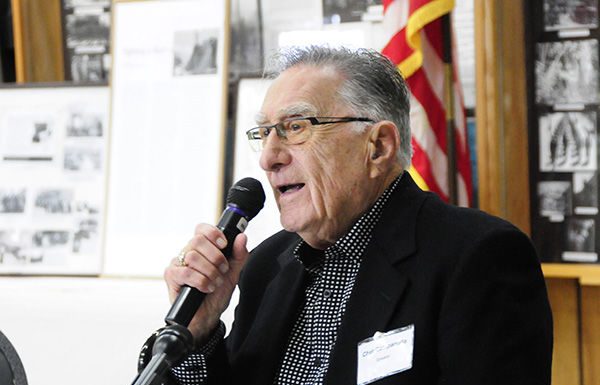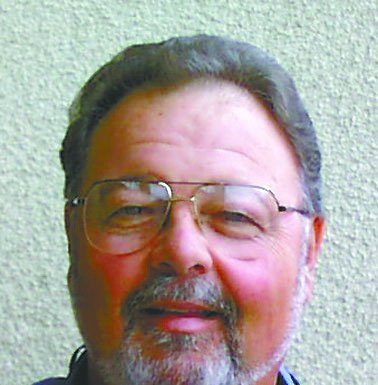Weep for the Granada, but It’s Time to Move On
By Patrick Quinn When you think of icons that define Morgan
Guest view: Be ember aware: Store firewood 30 feet away
This guest view is part of a periodic series of upcoming op-eds on tips to prepare for wildfire season, which started May 1 in Santa Clara County.Most people believe that wildfires ignite homes through direct contact with flames, but it is rare to have a home ignite this way. Flaming brands and embers can travel a mile or more ahead of the active front of a wildfire, and up to 60 percent of wildland/urban interface home ignitions result from embers.Your home could be at risk. Make changes now to reduce the ember threat to your home. Clean out debris from under your deck, and move woodpiles away from your house.Our “Ember Aware” campaign is intended to educate people on the risks of ember cast and the actions they can take to reduce those risks, to encourage residents to harden their homes against embers and/or to maintain those ember-resistant features, and to practice ember-safe housekeeping and landscaping. You can learn more at emberaware.comTip #3: Chuck that woodHow much wood could a woodchuck chuck? If he lived in one of California’s high fire hazard areas, he should chuck all of it at least 30 feet from his home.One of the most common ember hazards homeowners create is the placement of firewood stacks next to their home. During a wildfire, hundreds of burning embers could become lodged within the stack. The dry, high winds that often accompany wildfire can fan the embers and cause ignition. Once burning, the firewood stack can jeopardize just about any home, regardless of construction material, because of its ability to ignite combustible siding, provide a flaming exposure to windows and break the glass, or climb to the eave and possibly enter into the attic.Firewood should be stored at least 30 feet from the house, deck and other structures during fire season. If the firewood stack is located uphill, make sure burning logs won’t roll downhill and ignite the home. Don’t place the stack under tree branches or adjacent to wood fences that are connected to the house. Don’t let your firewood stack be the kindling for your house fire.Fire Marshal Dwight Good serves the Morgan Hill Fire Department and South Santa Clara County Fire Protection District and the CalFire Santa Clara Unit. He has 24 years of fire service experience. He can be contacted at [email protected].
Guest view: U.S. owes an apology for feds’ mistreatment of Italians
While many know about the impact of February 1942’s Executive Order 9066 on Japanese-Americans in the U.S. in response to the bombing of Pearl Harbor, surprisingly few are aware that thousands of Italian-Americans were swept up in the same law that imposed various restrictions including unannounced warrantless searches and even incarceration on certain foreign-born residents. San Jose resident Chet Campanella, 86, was a child when he lived through the imposition of these harsh, discriminatory restrictions. Campanella gave a presentation on the impact of EO 9066 on Italian-Americans in Morgan Hill Feb. 11, at the annual membership meeting of Friends and Family of Nisei Veterans (FFNV). The meeting took place at the Morgan Hill Buddhist Community Center. Sunday, Feb. 19, marked the 75th anniversary of EO 9066. Below is a short version of Campanella’s Feb. 11 presentation.
Guest view: Vote ‘yes’ for safe, modern schools
Measure I will allow MHUSD to attract high-quality teachers and keep them in our district. This bond will provide the necessary funds to update aging classrooms and schools to be equipped with the modern technologies essential to preparing students for their careers.
Don’t Drink and Drive … ‘Blah, Blah, Blah, Blah …’
"Don't drink, blah." Don't drink and drive, blah, blah, responsible, blah. No, blah, blah, drugs, blah, blah, blah …" By now, this must be what my teens hear when I talk about substance abuse, as I've talked to them about it since I thought they were old enough to understand, which is, for my daughter, since she was 4 when she asked me if she would die early. Jumping on the opportunity, I said "Don't drink alcohol and do drugs, choose friends who stay away from drinking and drugging, and you should live a long time," I told her.
Tips for a Greener and Safer October
October is here and brings about a special time in our Morgan Hill lives. October is a month of balance. The kids have settled into their school routines, holiday madness hasn't yet begun, and the weather is often just about perfect here in Morgan Hill - not too hot, not too cold, not too dry, and not too wet. All this blissful balance creates a little space in our lives to think about three important issues: safety, scheduling, and sharing.
Guest view: Veterans Day proclamation
Veterans Day Proclamation, by President Dwight D. Eisenhower, Oct.8, 1954
Whereas, it has long been our custom to commemorate Nov. 11, the anniversary of the ending of World War I, by paying tribute to the heroes of that tragic struggle and by rededicating ourselves to...
Making the most of education dollars
California's fiscal outlook continues to worsen. Concern is now
SCVWD works to secure flood control funding
In 2000, Santa Clara County voters approved a special parcel tax to fund the 15-year Clean, Safe Creeks and Natural Flood Protection Plan which provided funding for four major outcome areas.










